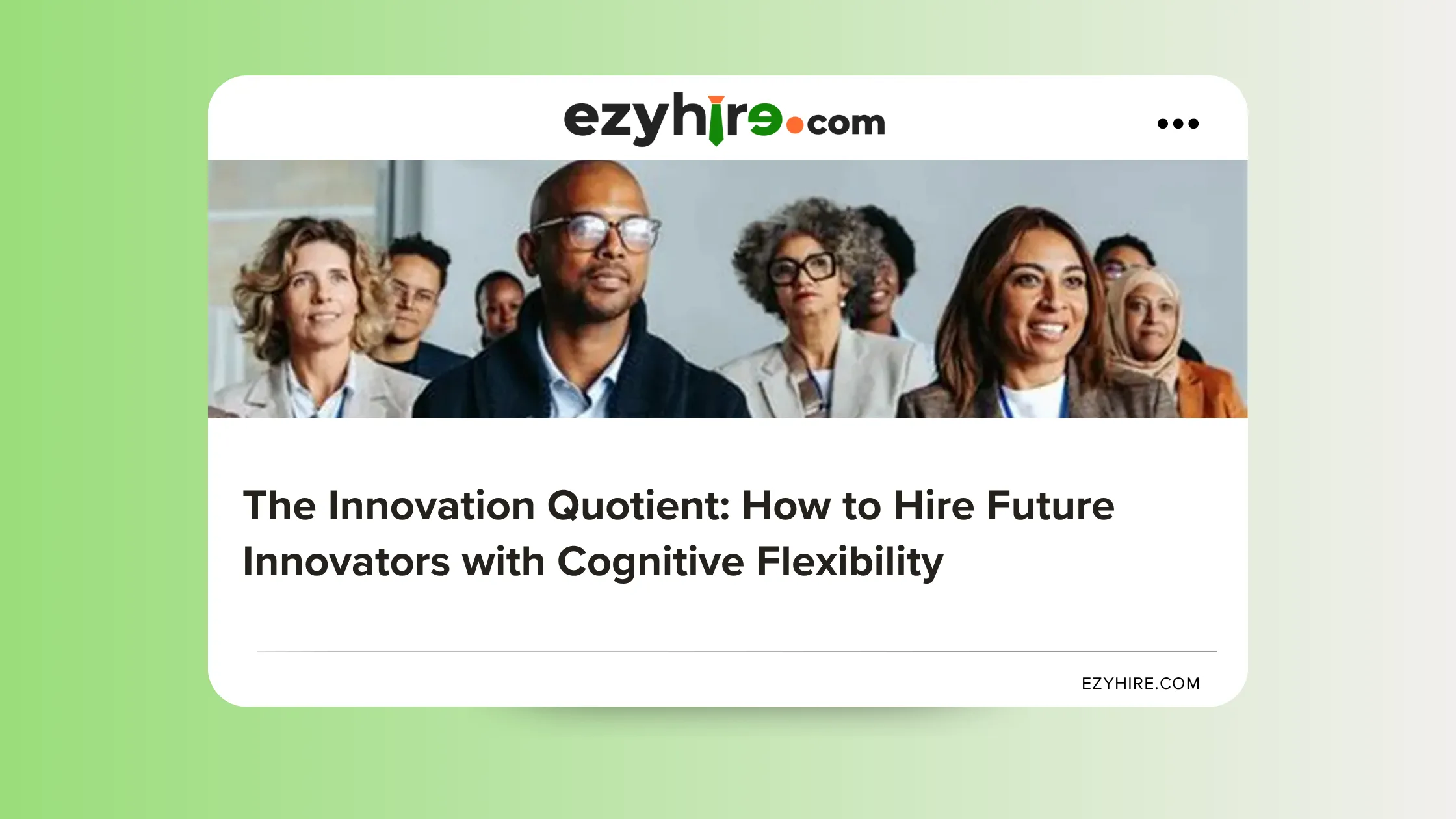The Countdown Begins: Anatomy of a Campus Hiring Crisis
The email subject line is short but brutal: BOARD MANDATE: 300 Graduate Trainees. 48-Hour Assessment Window.
For Sarah, an experienced Talent Acquisition Director, the message feels like a ticking clock. At first, there is the thrill of the challenge. But that excitement is quickly replaced with a sharp realization: she has just two days to turn chaos into control.
Her team of five recruiters is about to face an avalanche. Modern campus recruitment is no longer a steady stream of resumes. It is a flood. Thousands of applications will arrive in hours, fueled by the ease of digital submissions and the growing economic uncertainty pushing graduates toward every opportunity.
Sarah knows this is not only a logistical storm. It is a financial gamble with millions of dollars at stake.
- The average cost-per-hire for a campus recruit is over $6,000.
- For 300 hires, that means a direct investment of nearly $1.8 million.
- A single bad hire can cost up to 50 percent of annual salary in turnover costs, or three to four times salary when factoring in productivity loss, morale issues, and replacement costs.
For a $60,000 graduate role, one wrong hire could cost $180,000. Multiply that across hundreds of positions, and Sarah’s 48-hour mandate is not just a hiring challenge. It is a high-stakes business risk with potential multi-million-dollar consequences.
The Old Playbook: Why Traditional Tactics Fail in High-Volume Hiring
As the deadline looms, Sarah mentally reviews her team’s existing campus hiring process. But with every step, she realizes the old methods are destined to fail under such pressure.
The Manual Screening Nightmare
Her team begins with thousands of digital resumes. But resumes are weak predictors of performance. At high volumes, the process degrades into frantic keyword scanning and pattern matching.
The consequence is twofold:
- High-potential candidates without “perfect” resumes are ignored.
- Recruiters burn countless hours on administrative tasks that add no value.
Instead of surfacing the best talent, manual screening guarantees inefficiency and costly errors.
The Bias Trap
Stress accelerates bias. Under pressure, Sarah’s recruiters will default to unconscious shortcuts.
- Favoring candidates from prestigious universities.
- Preferring applicants who resemble themselves in background or communication style.
- Filtering out candidates for minor flaws like typos or unconventional career paths.
This exclusion-driven mindset directly reduces diversity and eliminates hidden gems. Worse, it increases the likelihood of expensive mis-hires.
The Candidate Experience Collapse
The final failure point is communication. With thousands of applicants, personalized follow-up becomes impossible.
Candidates are left waiting, ignored, or ghosted. For today’s Gen Z workforce, this is a deal-breaker. Studies show:
- 78 percent of candidates view their application experience as a reflection of company culture.
- 52 percent decline offers after a poor hiring experience.
- Negative reviews on platforms like Glassdoor spread quickly, damaging employer brand.
The short-term “efficiency” of cutting corners in candidate communication creates long-term reputational damage, making future hiring even harder.
The Strategic Pivot: From Funnel to Command Center
At this point, Sarah makes a critical realization. The traditional hiring funnel is not just outdated. It is fundamentally broken for high-volume scenarios.
The funnel is designed to filter people out sequentially. That works when handling dozens of candidates. It fails when handling thousands.
What she needs is a Command Center approach. Instead of filtering applicants one by one, this model allows for parallel assessment of every candidate at the very top of the funnel.
The benefits are game-changing:
- Every candidate is assessed simultaneously on relevant skills and competencies.
- High-touch recruiter time is reserved only for top performers who have already proven ability.
- Speed and quality coexist, rather than competing.
The Command Center does not optimize the old process. It re-architects it. It replaces guesswork and bottlenecks with scalable, data-driven precision.
The Ezyhire Arsenal: Turning Chaos Into Control
To make the Command Center vision real, Sarah leverages Ezyhire’s multi-layered assessment and automation platform. Each feature directly addresses a failure point in the old hiring model.
Deploying the Fairness Protocol
The first priority is fairness. Manual resume review is subjective and biased.
Sarah replaces it with Ezyhire’s standardized group assessments, ensuring every candidate is evaluated against the same objective criteria.
- Education bias and affinity bias are eliminated.
- Candidates are compared on true skills, not resume formatting.
- The process is transparent, fair, and data-backed.
This approach builds trust with candidates, 76 percent of whom consider fair hiring practices a top priority. It also creates diverse, high-performing teams. In fact, diverse teams are 87 percent better at decision-making.
Activating the Digital Fortress
Fraud is the next threat. With the rise of generative AI and impersonation tactics, graduate hiring faces rampant cheating.
Ezyhire deploys multi-layered security to defend assessment integrity:
- AI proctoring and liveness detection flag suspicious behavior like multiple faces or background voices.
- Real-time ID verification ensures candidates are who they claim to be.
- Browser Lockdown prevents Google searches, ChatGPT usage, or tab switching during tests.
This digital fortress ensures results reflect true ability, not external help. Hiring decisions are no longer guesses but verified insights.
Engaging the Efficiency Engine
With thousands of applicants, manual scoring and scheduling are impossible.
Ezyhire automates these tasks:
- Objective questions are graded instantly.
- Candidates are ranked in minutes.
- Recruiters are freed from administrative overload.
The result is compressed Time-to-Fill and Time-to-Hire metrics, transforming recruiters into strategic advisors who focus on engaging only top-performing candidates.
Amplifying the Human Connection
Finally, Sarah turns technology into a platform for human connection.
With Live Invigilator Mode, her team interacts with candidates in real time during assessments. They answer questions, showcase company values, and create a positive brand experience.
This human touch matters. 44 percent of Gen Z candidates say recruiter relationships directly influence their job acceptance decision. By engaging during the process, Sarah strengthens employer brand and builds loyalty before offers are even extended.
Mission Debrief: The Results of a Command Center Approach
In just 36 hours, Sarah’s team moves from chaos to clarity.
- 3,000+ candidates assessed simultaneously.
- 350 top-performing graduates identified with confidence.
- Candidate experience scores surge, with positive feedback from applicants.
- Employer brand strengthened on campus through fairness and transparency.
Sarah not only meets the 48-hour mandate. She exceeds it. More importantly, she transforms a one-time crisis into a scalable, repeatable strategy for the future of campus recruitment.
The Bigger Picture: Why Every TA Leader Needs a Hiring Command Center
Sarah’s story is not fiction. It is the reality for every Talent Acquisition leader managing high-volume recruitment.
The old hiring funnel is collapsing under the weight of digital applications, rising fraud, and the expectations of modern candidates. Manual screening, biased decision-making, and broken communication are not just inefficient. They are existential threats to employer brand and financial stability.
The Command Center model is the future. It is about simultaneous assessment, automation, fraud prevention, and human connection at scale.
To summarize the transformation for her leadership, she presents a simple, powerful comparison.
| Metric | The Old Guard’s Playbook (Projected Outcome) | Ezyhire Command Center (Actual Outcome) |
| Time to Shortlist | 2-3 Weeks (Manual Screening) | 36 Hours (Automated Assessment) |
| Bias & Fairness Risk | High (Subjective, Affinity Bias) | Low (Standardized, Objective Criteria) |
| Assessment Integrity | Compromised (High risk of fraud) | High (AI-Proctored & Secured) |
| Candidate Experience | Impersonal, Slow (78% see it as a reflection of company values ) | Engaging, Transparent, Professional |
| Projected Cost-Per-Hire | ~$6,110 (Industry Average ) | Significantly Reduced (Lowered recruiter hours & admin costs) |
| Quality of Hire | Variable (Risk of bad hires costing 3-4x salary ) | High (Data-driven, skill-based selection) |
Your Command Center Awaits
The campus hiring crisis is here, but so is the solution. With Ezyhire, you can transform high-stakes mandates into strategic victories.
- Eliminate bias with standardized assessments.
- Protect integrity with fraud-proof proctoring and ID checks.
- Slash time-to-hire with instant automation.
- Build stronger candidate relationships with live engagement tools.
👉 Book a free demo today and see how Ezyhire can turn your graduate hiring chaos into control.
👉 Or, if you are ready to experience the transformation firsthand, start your free trial now and discover how the Command Center approach can future-proof your recruitment strategy.
The countdown is always ticking. The question is, will you face it with outdated tactics or with a system built for speed, scale, and success?




